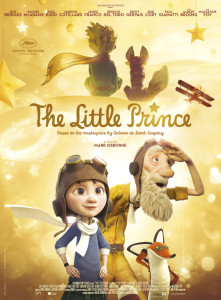When you feel intensely about something, you create it with utmost passion. This thought was substantially pronounced through Mark Osborne’s presentation of the ‘Making of the animated feature The Little Prince’ at the ABAI Fest and KAVGC Summit 2016.
‘It is only with the heart that we can see rightly, what is essential is invisible to the eye’ – a thought by Antoine de Saint-Exupery from the famous book The Little Prince inspired Mark Osborne since childhood as he was engrossed in the story of the book which made sense to him at every point of his life.
“When I thought of creating a film of this book I wasn’t sure whether I could tell such a great story in the form of a film. I was scared that I would not do justice to the story as the book was way greater to be created into a film by someone like me,” admitted Mark Osborne.
a film of this book I wasn’t sure whether I could tell such a great story in the form of a film. I was scared that I would not do justice to the story as the book was way greater to be created into a film by someone like me,” admitted Mark Osborne.
Gradually, Osborne’s intense connection with the book kept on increasing as the book kept him connected to his better half and he also imparted the story of this book to his two kids. Finally, after creating his own short film named More and directing the phenomenal DreamWorks’ feature Kung Fu Panda (2008), Mark Osborne decided to tell the most influential story which was immensely close to his heart in the animated form. “I just wanted to celebrate the book and tell the powerful story of the book in the best possible way,” he recollected.
Stop motion animation has been Osborne’s forte and old love therefore, The Little Prince or Le Petit Prince (in French) is a combination of both stop motion and CG animation. The film conveys the story of a little girl and her escapade into her magical world of imagination. Imagination influences reality or vice versa as this girl experiences the immense happiness of life in her unreal world which in turn changes reality for her.
The film displayed two stories or rather two worlds in one story. There was a real world of the protagonist and an imaginary one of the same. Therefore, CG animation was used to display the real world while, stop motion was used for the magical one.
Paper, sand, plastic and clay paper was used to create the stop motion animation. He explained, “I wanted to keep the stop motion animation simple and maintain the look and feel of the paper alive. Lighting and manually animating the stop motion sequences and characters was a long yet exciting process.”
The story process of the film took around two years as Osborne worked on pre production more than any other process. “The story was the paramount factor and therefore each artist working on the film had to be engrossed in the story so that he/she could produce effectively in the right direction if they shared the same vision like me,” he exclaimed.
Artists from different parts of the world worked on this film as they had to keep up to the exponential level that the book had already set in the minds of many. Whenever you create something that already exists you can’t make everyone happy. He said, ”There will always be someone who likes the existing creation and will be unhappy by the new version. I wanted to convey all the magical moments of the story and touch the hearts of the audience viewing the film so, I gave my best even if it took time and money.”
Directed by Mark Osborne, The Little Prince (2015) has been travelling to various festivals across the globe winning prestigious awards. Though it has not been officially released in India the audience got the golden opportunity to experience this magical film as it was screened at the ABAI Fest and KAVGC Summit 2016. So, if you didn’t attend ABAI fest probably you missed on something way important.
‘Not break but heal relationships’ was the ultimate message that Osborne wanted to portray from this film so that he could inspire people to live, dream, improve and better their lives.